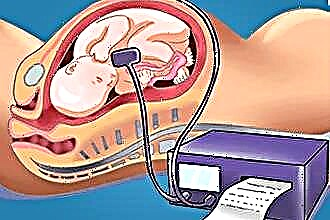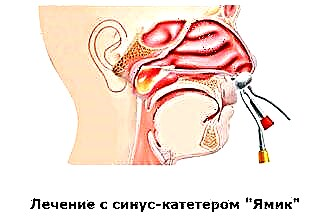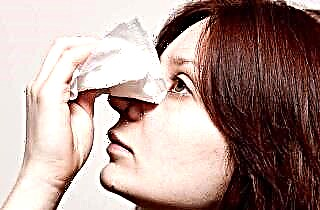A severe runny nose is a companion to most colds. Swelling and inflammation of the nasopharyngeal mucosa leads to the clogging of not only the nasal passages, but also the ears. A slight decrease in hearing is associated with the formation of negative pressure in the ear cavity due to edema of the mouth of the auditory (Eustachian) tube, one end of which goes directly into the nasal cavity. What to do if the ear is blocked from a runny nose?
Use symptomatic medications such as ear drops and nasal drops, preferably after the cause of the problem has been eliminated. In most cases, rhinitis occurs with a viral infection of the nasopharynx. Nasal congestion most often occurs with ARVI, which should be treated with antiviral agents. An integrated approach to resolving the issue allows you to cope with the symptoms of the disease and congestion in the ears literally within 3-4 days.
Causes of ear congestion
 What causes ear congestion with a cold? From the school course of anatomy, it is known that the hearing aid, in particular the middle ear, communicates with the nasopharynx through the Eustachian tube. Thanks to it, the same air pressure is maintained in the ear cavity as in the environment. But with inflammation of the nasal mucosa, the soft tissues swell greatly, so the opening of the auditory tube is blocked. Over time, the air pressure in the tympanic cavity decreases, so the ear membrane is literally pulled into the ear.
What causes ear congestion with a cold? From the school course of anatomy, it is known that the hearing aid, in particular the middle ear, communicates with the nasopharynx through the Eustachian tube. Thanks to it, the same air pressure is maintained in the ear cavity as in the environment. But with inflammation of the nasal mucosa, the soft tissues swell greatly, so the opening of the auditory tube is blocked. Over time, the air pressure in the tympanic cavity decreases, so the ear membrane is literally pulled into the ear.
Due to the retraction of the tympanic membrane into the ear, its elasticity is significantly reduced. But it is she who plays the role of a resonator and amplifier of sounds that are captured by the human ear. So it turns out that with inflammation of the nasopharynx, not only the nose, but also the ears are blocked.
It should be understood that ear plugging is fraught with rather serious complications. If the inflammation in the nasal cavity is not stopped in time, the infection can penetrate into the auditory tube and provoke inflammation in it. In this case, a patient with a cold will develop tubo-otitis (eustachitis). In addition, due to impaired ventilation of the ear cavity, serous effusions will begin to accumulate in it. And this can subsequently lead to the development of otitis media and labyrinthitis.
Ear congestion is a consequence of edema of the opening of the auditory tube and its obstruction, which occurs with an infectious lesion and inflammation of the nasopharynx.
Ways to solve the problem
What to do if ear is blocked after a runny nose? First, it is necessary to eliminate the runny nose, which is caused by the hypersecretion of mucus in the nasal cavity. However, it should be understood that a runny nose itself is only a symptom that indicates the presence of an infection in the upper respiratory tract. Therefore, treatment begins with the elimination of pathogenic agents in the respiratory system.
Most often, rhinitis appears with colds caused by viruses. They can be destroyed by means of antiviral agents and antiseptics for sanitizing the nasopharynx. In addition, it is necessary to eliminate inflammation in the nasopharynx itself and in the Eustachian tube. For these purposes, nasal and ear drops of vasoconstrictor and anti-inflammatory action are used.
Delayed treatment of ear congestion leads to the development of catarrhal or purulent otitis media, as well as conductive hearing loss.
To quickly restore hearing and restore elasticity to the membrane will help special swallowing exercises and the so-called pneumomassage. Physiotherapy treatment can be done independently at home or with a specialist. In the clinic, pneumomassage is performed using special devices - "APMU-Compressor" or Politzer's pneumatic balloon.
Antivirus tools
As practice shows, with the help of antiviral drugs, a cold is treated within 4-5 days. They destroy most of the known viral strains that cause the development of flu, colds, pharyngitis and other respiratory diseases. Medicines affect the replication (synthesis process) of viral RNAs, due to which the number of pathogenic agents in the ENT organs is reduced. Due to this, inflammatory processes in the nasopharynx and the main manifestations of the disease are stopped.
As a rule, ARVI treatment is carried out with the help of such medicines:
- Cycloferon;
- Tamiflu;
- "Amiksin";
- "Arbidol";
- "Kagocel";
- Groprinosin;
- Ribavirin;
- Relenza.
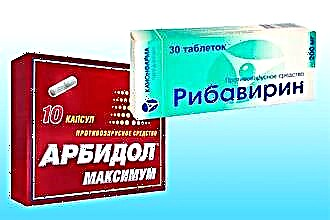
Antiviral agents eliminate not the consequence, but the key cause of the development of the common cold - the viral flora in the nasopharynx.
Timely medication can shorten the recovery period by 3-4 days. The treatment is continued until all foci of inflammation in the respiratory organs disappear. Premature refusal of drug therapy is fraught with the transition of the disease into a chronic form.
Vasoconstrictor drops
If your nose and ears are blocked, what to do? As drugs with symptomatic action, you can use vasoconstrictor nasal drops. They eliminate swelling in the lymphoid tissues of the nasal cavity, thereby increasing the lumen in the opening of the auditory tube. Thus, its patency improves, the pressure in the ear cavity is normalized and, accordingly, the congestion of the ears passes.
Vasoconstrictor drops can be used for no more than 4-5 days in a row, as they are addictive and can cause the development of rhinitis medicamentosa.
You can unblock a stuffy nose and, accordingly, ears with the help of such drops:
- Xymelin;
- Rinorus;
- "Snoop";
- "Naphtizin";
- "Nazol";
- Knoxprey;
- Sanorin;
- "Nazivin".
As a rule, treatment with vasoconstrictor drops is combined with the use of oil-based nasal sprays. They soften the mucous membrane, prevent it from drying out and irritation.
Sanitation of the nasopharynx
How to treat if the ear is blocked with a runny nose? Washing is an old but very effective way to eliminate inflammation in the nasal cavity. Saline, in particular isotonic, solutions are used to sanitize the nose and paranasal sinuses. Why? They reduce the viscosity of mucus, promote its excretion from the nasal passages, and also flush out pathogenic agents and accelerate the healing of mucous membranes.
How to quickly relieve nasal congestion? To increase the effectiveness of the procedure, it is better to take a syringe with a rubber tip or a 20 ml syringe without a needle for washing. Tilting your head slightly to the side, you need to inject the medicinal solution into one nostril. With normal patency of the nasal passages, fluid will pour out of the second nostril. In the same way, you need to rinse the second nasal canal, tilting your head to the other side.
 From pharmacies for the sanitation of the nasopharynx, you can use saline, "Aqualor", "Humer", "No-salt". All of them contain sea salt, which has a beneficial effect on the condition of the nasal mucosa, and also promotes its regeneration. What to do if pharmacy preparations are not at hand?
From pharmacies for the sanitation of the nasopharynx, you can use saline, "Aqualor", "Humer", "No-salt". All of them contain sea salt, which has a beneficial effect on the condition of the nasal mucosa, and also promotes its regeneration. What to do if pharmacy preparations are not at hand?
You can also treat rhinitis with your own saline solution. To do this, dissolve ½ tsp. salt, preferably sea salt, in 200 ml of boiled warm water. If you feel a burning sensation in the nose while rinsing, add a little water to the solution to reduce the salt concentration in it.
Pneumatic massage of the tympanic membrane
Pneumatic massage is a physiotherapy procedure during which the eardrum is massaged by alternating low and high air pressure.Thanks to this procedure, it is possible to normalize tissue trophism, accelerate metabolic processes and restore the elasticity of the ear membrane. Vacuum massage can be carried out in a hospital or at home, without resorting to the use of special devices and devices.
To carry out manual pneumomassage, you must:
- put your palms on the auricles;
- press a little on the auricles to increase the air pressure on the membrane;
- pull your hands sharply and thereby restore normal pressure on the membrane;
- in one procedure, it is desirable to do up to 10 clicks, it must be repeated daily at least 3-4 times a day.
In addition to pneumomassage, it is recommended to perform simple swallowing exercises, with which you can eliminate congestion in just a few seconds. To do this, you need to press the wings of the nose against the cartilaginous septum and, with your mouth closed, try to blow air through the nose. The restoration of the normal position of the ear membrane will be indicated by the characteristic pop in the ear.
Ear drops
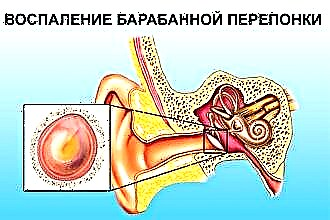 With prolonged ear insertion, some patients experience pain. It may be due to catarrhal inflammation of the tympanic membrane or Eustachian tube. What to do if your ears are blocked with a cold? To relieve the symptoms of the disease and relieve discomfort, it is recommended to use ear drops with analgesic and anti-inflammatory effects.
With prolonged ear insertion, some patients experience pain. It may be due to catarrhal inflammation of the tympanic membrane or Eustachian tube. What to do if your ears are blocked with a cold? To relieve the symptoms of the disease and relieve discomfort, it is recommended to use ear drops with analgesic and anti-inflammatory effects.
Medicines have a pronounced decongestant and analgesic effect. In addition, they prevent the development of acute inflammation in the tympanic membrane and ear cavity. To relieve swelling and inflammation in the ear membrane, you can use drugs such as:
- Otipax;
- Otirelax;
- "Sofradex";
- Otinum;
- "Garazon".
If there are perforations in the eardrum, as evidenced by a whistling sound when sneezing and talking, in no case should you use ear drops without a doctor's recommendation. Some drugs contain components that, when absorbed into the systemic circulation, can cause serious complications in people with chronic kidney disease.


